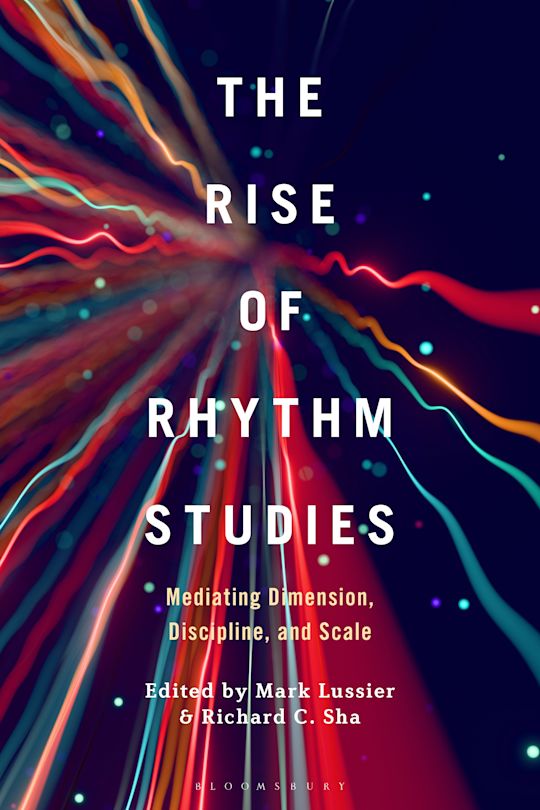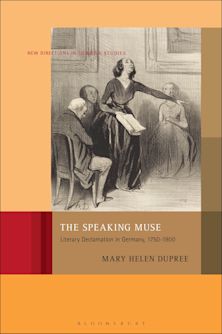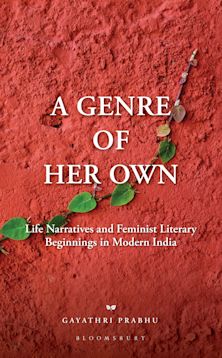The Rise of Rhythm Studies
Mediating Dimension, Discipline, and Scale
The Rise of Rhythm Studies
Mediating Dimension, Discipline, and Scale
Payment for this pre-order will be taken when the item becomes available
This product is usually dispatched within 1 week following the publication date
- Delivery and returns info
-
Free US delivery on orders $35 or over
Description
Rhythm is everywhere. Its ability to focus and unify interdisciplinary conversation begs the questions: What is rhythm and can different disciplines agree on its definition?
Rhythm studies have emerged as a key background form traversing cultural, natural, and social forms like cognition, communication, and even cosmology. An added boon: this background can seem unifying. Those who explore such entangled phenomena study the throbbing presence of rhythmic, oscillatory, and vibratory potentials: Neuroscientists turn to rhythm for novel explanations of why our cognitive capacities are so limited; physicists use it to cross time and space; scholars in various fields turn to it to rethink materialism and affect theory.
This lively collection considers why rhythm currently functions as a form of mediation between disciplines, across widely different scales and dimensions. The Rise of Rhythm Studies tests what rhythm can do through theoretical examinations and in case studies ranging from European literature to topology and media studies to Chinese visual art. Established scholars, such as Nina Kraus, Anna Gibbs, and Caroline Levine, alongside rising scholars in the field, marshal transdisciplinary perspectives in order to understand rhythm as a boundary condition for living in and working through and with the world.
Table of Contents
Mark Lussier, Arizona State University, USA, and Richard C. Sha, American University, USA
Part I. Theoretical Foundations
1. Between Feltness and Knowing: Fanon, Brain Waves, and the Epistemology of Rhythm
Richard C. Sha, American University, USA
2. Rhythm: Inside and Outside the Head
Nina Kraus, Northwestern University, USA
3. Rhythmic Operations as Boundary Conditions
Mark Lussier, Arizona State University, USA
4. Textual Rhythm and Textual Sense Making
Sha Xin Wei, Arizona State University, USA
Part II. Social Pulsations
5. Arrythmia: Capitalism's Destruction of Rhythm and Relation
Anna Gibbs, Western Sydney University, Australia
6. Rhythm in and of Social Interaction: A Study in Intersubjectivity and Power
Chiara Bassetti, University of Trento, Italy
7. Routines of Creativity
Caroline Levine, Cornell University, USA
Part III. Aesthetic Manifestations
8. The Measures of Fugitive Time
Keith D. Leonard, American University, USA
9. Rhythm of the Brushstroke, Rhythm of the Body, and Cosmic Rhythm, through Chinese Calligraphy and Painting
Yolaine Escande, Centre National de la Recherche Scientifique, France
10. Reading Rhythm as Translation: Bei Dao's "The Answer"
Nick Admussen, Cornell University, USA
11. Rhythms in Painting (1910-1930)
Georges Roque, Centre National de la Recherche Scientifique, France
Notes on Contributors
Index
Product details

| Published | Jan 08 2026 |
|---|---|
| Format | Hardback |
| Edition | 1st |
| Extent | 272 |
| ISBN | 9798765125281 |
| Imprint | Bloomsbury Academic |
| Illustrations | 26 b&w illustrations |
| Dimensions | 9 x 6 inches |
| Publisher | Bloomsbury Publishing |
Reviews

ONLINE RESOURCES
Bloomsbury Collections
This book is available on Bloomsbury Collections where your library has access.


































